For 100 Years, KitchenAid Has Been the Stand-Up Brand of Stand Mixers
Even celebrity chef Julia Child said that the sleek appliance made mixing ‘marvelous’
/https://tf-cmsv2-smithsonianmag-media.s3.amazonaws.com/filer/66/e4/66e4d03c-9e23-4e70-910a-0e5b4ba65bd6/kitchenaid_anniversary_mixer.jpg)
As the story goes, Hobart Manufacturing Company was testing a new product for home use in 1918. Based in Troy, Ohio, the maker of commercial foodservice equipment wanted to break into the retail market with a smaller version of its “food preparer”—an 80-quart stand mixer it produced and sold to professional bakeries.
When company executives asked a housewife what she thought of the product, she reportedly replied, “I don’t care what you call it, it’s the best kitchen aid I’ve ever had.”
And so was born the KitchenAid, which started making its way into homes across America the following year. The stand-up brand of stand mixers marks its 100th anniversary this year and is now considered the iconic staple for what a well-furnished kitchen should include.
“Sometimes those apocryphal stories become conventional wisdom,” says Paula Johnson, curator for the Division of Work & Industry at the National Museum of American History in Washington, D.C. “I have no proof that it actually happened, but it’s a great story.”
A rather famous KitchenAid is featured in one of the exhibits at the Smithsonian museum. This particular unit was seen by millions of people when it occupied a prominent position in Julia Child’s kitchen, where she taped “The French Chef” and other television series. She used it numerous times to demonstrate the art of cooking on some of her PBS programs.
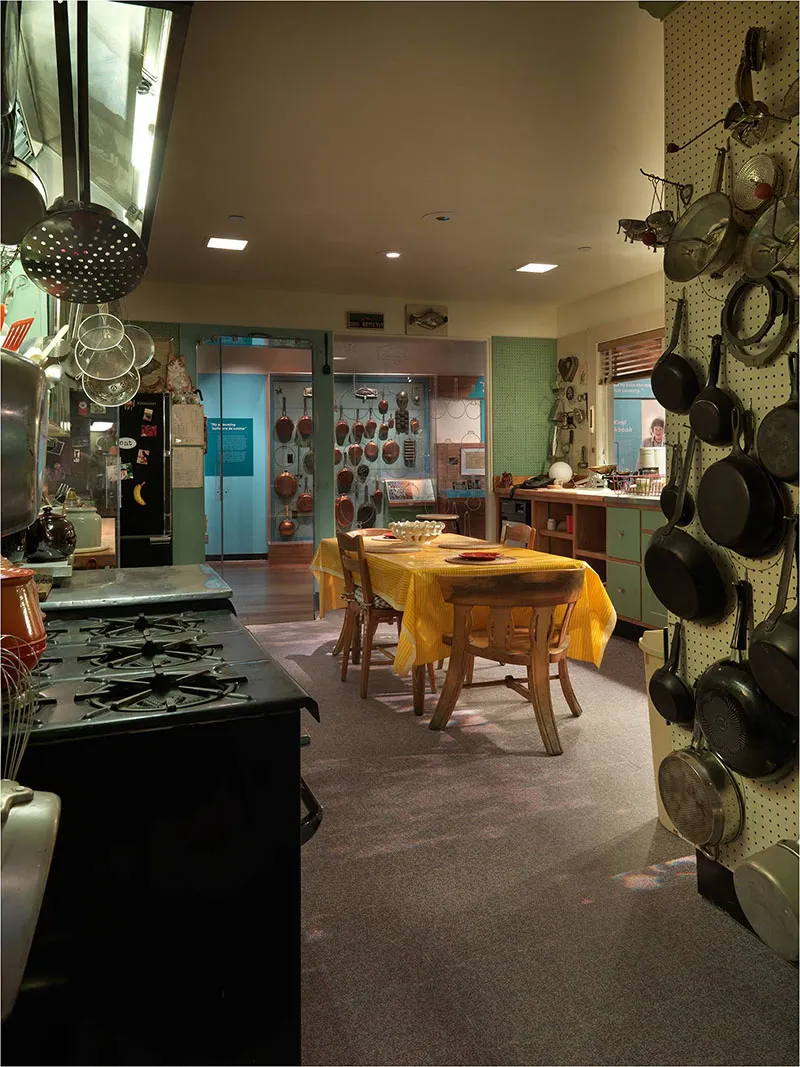
Child’s beloved KitchenAid is still on display in her kitchen—except it is no longer in Cambridge, Massachusetts. In 2001, the Smithsonian packed up her workplace—butcher block, stockpots and stand mixer—and then reassembled it at the National Museum of American History.
“We collected her entire home kitchen and brought everything to the museum,” Johnson says. “The whole kitchen is there—about 1,200 different parts and pieces. Her KitchenAid is on one of the counter tops and is on view for the public to see.”
That legendary stand mixer got its start in 1908 when Herbert Johnston, a Hobart engineer and one of the company’s founders, was watching a baker mixing dough by hand and believed there was a better way to mechanically perform that tiresome task. His creation, which received U.S. patent number 1,264,128 on April 23, 1918, was labeled simply as a “Mixing Machine.” He shared credit for the invention with Thomas F. Rataiczak.
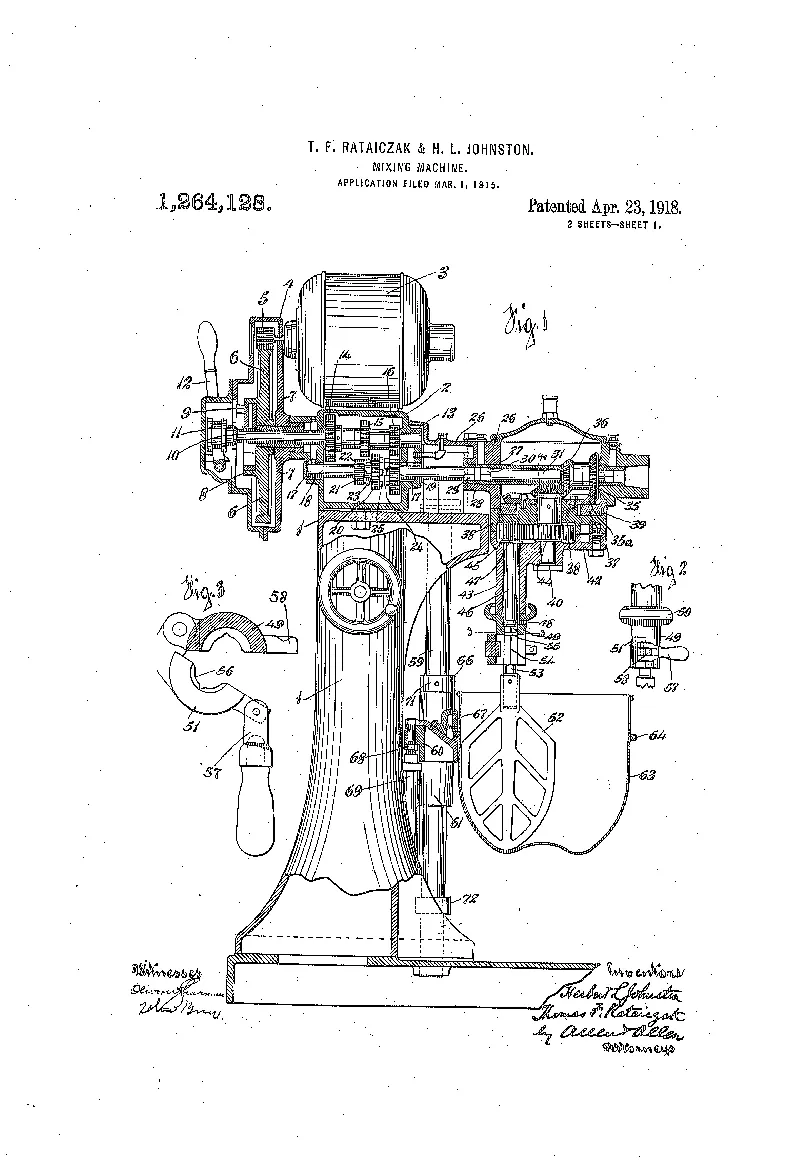
One of the innovative features of the mixer was its ability to move the bowls up for mixing and down to add ingredients or remove the mixed medium. The patent describes how it adjusts “for the mounting of bowls of different size, and for the hydraulic raising and lowering of the bowl supports,” which was quite handy when the was bowl full of dough.
Hobart introduced the H model in 1914. Its 80-quart bowl was a hit with commercial bakeries because it had the capacity to mix, fold and beat large quantities of batter and dough. The U.S. Navy took an interest in the mixer, and by 1917, it had become standard equipment on all ships.
A year later, Hobart started eyeing the retail market and stamped the KitchenAid name on its first product: the C-10, a 10-quart stand mixer that was marketed for home use, small commercial kitchens and soda fountains. When stores were reluctant to carry the line, Hobart hired a largely female sales force to sell the C-10 door to door.
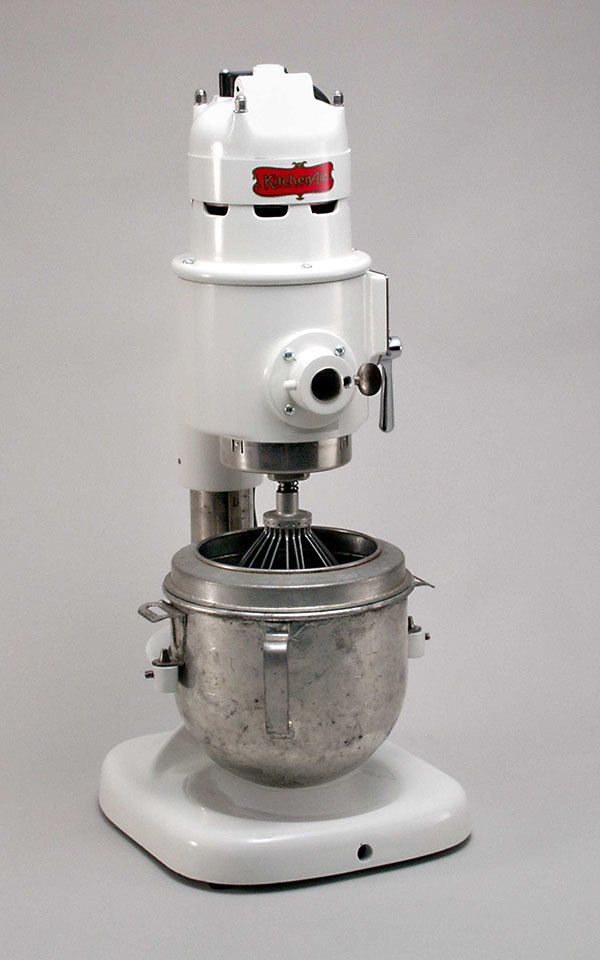
KitchenAid became a division of Hobart, and in 1922, it introduced the H-5, a 5-quart mixer that better fit the needs of the home kitchen. The unit sold for a substantial sum: $189.50, more than $2,800 today when adjusted for inflation. The G model rolled out in 1928. It appealed more to housewives because it was lighter than the H-5, weighing about half as much.
The durable line carved out a market for itself but faced stiff competition from other brands, including the Sunbeam Mixmaster, which was the most popular stand mixer through the 1950s. KitchenAid made a quality product, but its aesthetic appearance left a lot to be desired. It looked utilitarian and mechanical, much like the antecedent H model.
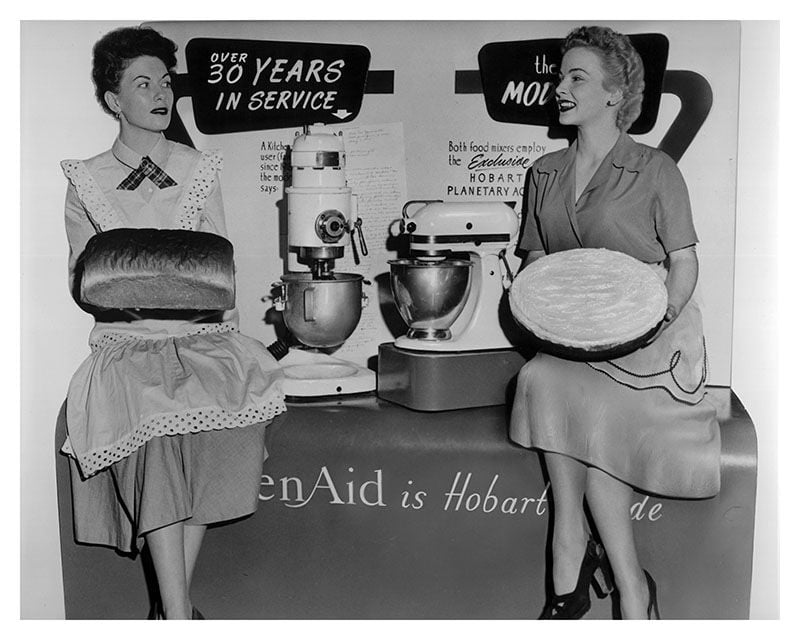
KitchenAid brought in industrial designer and commercial artist Egmont Arens to develop a series of low-cost mixers. In 1937, he created the streamlined K model, which has become the standard for the brand. Featuring sleek lines and enameled surfaces, this more modern take on the mixer was instantly popular and helped KitchenAid to eventually take the top spot in sales.
Brian Maynard, a KitchenAid marketing director, said it best in 2007: “The first mixer was actually introduced in 1919, but it was Arens’ 1937 Model K design that really captivated consumers. And while its core following is among those who love to cook and bake, our research tells us that many less avid cooks simply want one on their countertop, largely because they like its design.”
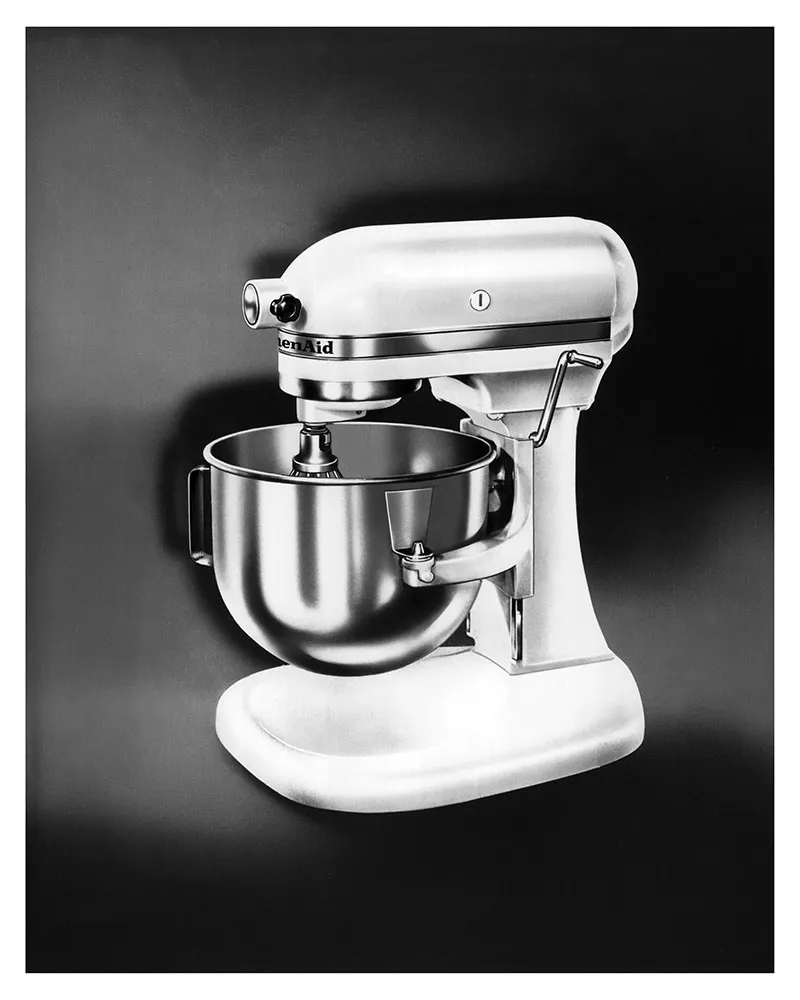
The design proved so successful, KitchenAid actually used a silhouette of the mixer’s shape as part of its logo. That image was trademarked with the U.S. Patent and Trademark Office. In 1997, the mixer was named an icon of American design by the San Francisco Museum of Modern Art.
Hobart sold KitchenAid to the Whirlpool Corporation in 1986. The new owner continues to assemble the stand mixer at the KitchenAid factory in Greenville, Ohio, which has been its home since 1946.
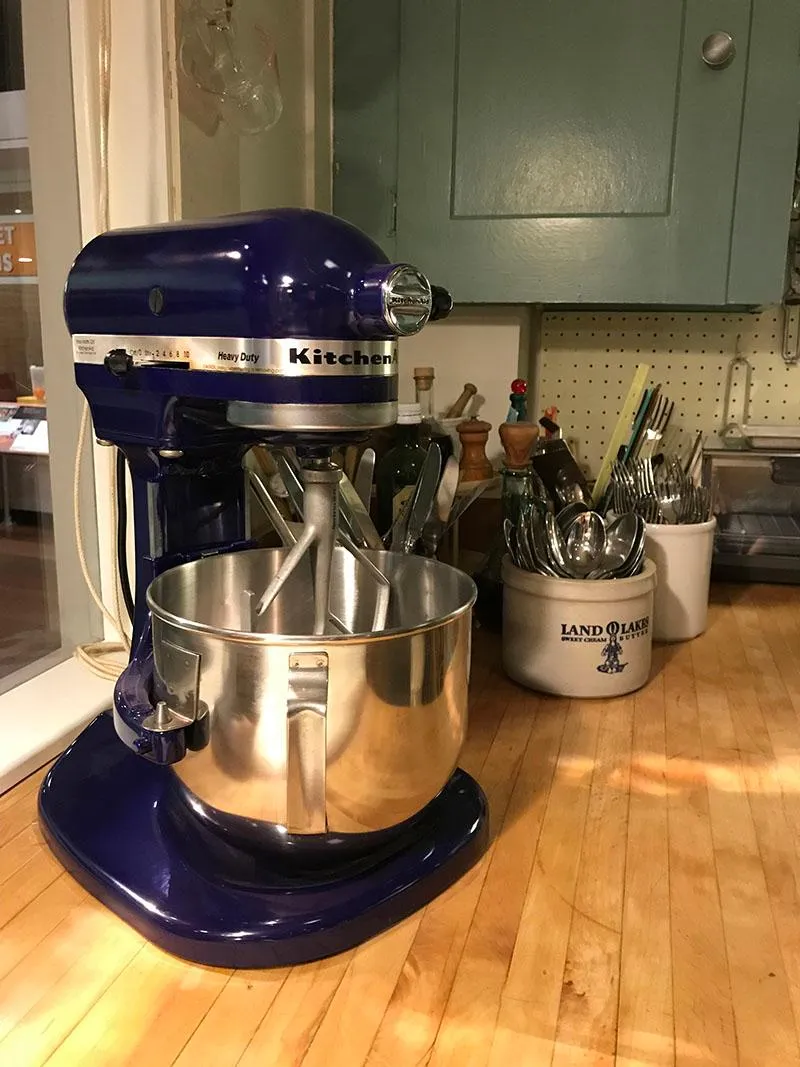
Julia Child eventually fell in love with the KitchenAid. When she purchased her first stand mixer is not known, but she used the brand many times on her cooking shows. Child never endorsed products, but she came close to doing so when she donated her kitchen to the Smithsonian in 2001.
“I think this mixing machine is absolutely marvelous,” she told museum staff back then. “It’s the KitchenAid K-5A, heavy duty motor. . . This machine will last you the rest of your life.”
Except Child’s model was not the K-5A. According to Johnson, it is in fact a later edition.
“It is a Model K5SSBU bowl-lift stand mixer in cobalt blue enamel with a stainless-steel bowl, which is inscribed ‘Bon Appetit! Julia Child,’” she says. “Julia always referred to it as her K-5A. We don’t know why she did, but it’s definitely not that model.”
No matter what the model number, Child was sold on KitchenAid. She recognized it as an indispensible part of her kitchen.
“She really realized the utility of her stand mixer and would not give it up,” Johnson says.
Well, at least until she allowed the Smithsonian to take it for safekeeping.
/https://tf-cmsv2-smithsonianmag-media.s3.amazonaws.com/accounts/headshot/dave.png)
/https://tf-cmsv2-smithsonianmag-media.s3.amazonaws.com/accounts/headshot/dave.png)